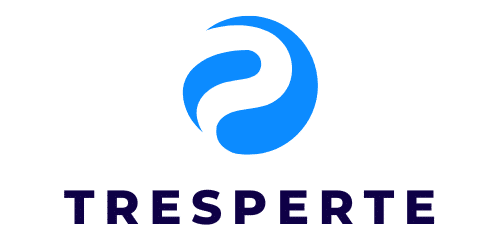How Is Augmented Reality Transforming Classroom Learning Experiences?

The future of education has always been a hot topic, and in this age where technology is rapidly evolving, the spotlight shines brightest on augmented reality (AR). Augmented reality technology isn’t just for entertainment; it’s having a profound impact on the world of education. As educators, you are always looking for the most effective ways to engage your students and enhance their learning experiences. AR could be the game-changing educational tool you need to make learning more interactive and real.
Augmented Reality: The New Frontier in Education
When it comes to education, augmented reality is not just a buzzword; it’s a powerful, immersive learning tool that’s transforming the way we teach and learn. This technology overlays digital information onto the real world, creating an interactive experience that seamlessly blends reality with digital content.
In the same genre : Effortless booking: motels and hotels near you
Augmented reality is reshaping education in a multitude of ways. Today, we’ll delve into how AR is being used to enhance classroom learning experiences, transforming education and training methodologies, and driving student engagement to new heights.
Enhancing Classroom Learning Experiences with AR
Augmented reality has the potential to make classroom learning more engaging, dynamic, and fun. It offers a new dimension to learning by bridging the gap between theoretical knowledge and practical application.
In parallel : Can Urban Vertical Farming Meet the Food Demand of Growing Populations?
Consider teaching Geography, where students traditionally learn about various countries and their locations on a map. With AR, these students could virtually explore the countries, witnessing the geographical landscapes, the people, and their cultures, making the learning experience more real and memorable.
In Science classes, augmented reality could allow students to interact with 3D models of human anatomy or complex molecules, gaining a deeper understanding that isn’t possible with 2D images in textbooks. It’s no longer about just reading and imagining; it’s about virtually experiencing and understanding.
Transforming Education and Training Methodologies
AR is not just enhancing learning experiences; it’s also changing the way education and training are delivered. Rather than relying solely on traditional teaching methods, educators are using AR to create more immersive and interactive training sessions.
For example, in medical training, augmented reality could allow students to practice surgical procedures in a low-risk, virtual environment before doing it in real life. The same applies to mechanical or engineering education, where students can virtually disassemble and reassemble machinery, gaining hands-on experience without the need for expensive equipment.
Additionally, AR presents the opportunity for individualized learning. Students can learn at their own pace, revisiting the AR content as many times as needed until they fully understand the concept. This personalized learning approach caters to individual learning styles and abilities, thereby improving overall learning outcomes.
Driving Student Engagement with AR
A major challenge for educators is keeping students engaged and motivated to learn. But, this is where augmented reality shines. By offering interactive, immersive, and real-world experiences, AR can captivate students’ attention and stimulate their curiosity.
AR can turn learning into a game, making it fun and engaging. From treasure hunts to quizzes, augmented reality can gamify education, leading to higher participation rates and better information retention.
Moreover, AR can make abstract concepts more concrete. The ability to visualize and interact with these concepts can help students grasp them more easily, fueling their understanding and interest. For instance, math lessons could become less daunting and more appealing if students could manipulate virtual 3D shapes or solve puzzles in an AR app.
The Future of AR in Education
The potential of augmented reality in education is immense. With continuous advancements in technology, it’s likely that AR will play an even larger role in the educational landscape. While we’re already witnessing its impact on classroom learning, there’s still much more to explore and leverage.
For instance, AR could be used for remote learning, offering students a virtual classroom experience from their home. Or imagine history lessons where students could go back in time and witness historical events in a virtual setting.
However, despite the potential, the full-scale integration of AR in education also brings challenges. Technical issues, cost of implementation, and the readiness of both educators and students to adapt to this new technology are all hurdles that need to be overcome.
In the end, while augmented reality may not replace traditional learning methods, it certainly is an effective supplement. As educators, it’s essential to stay informed and adaptable, ready to harness the potential of AR to enhance education, create engaging learning experiences, and ultimately, shape the future of learning.
Enhancing Critical Thinking through AR in Education
The contribution of augmented reality to the realm of education is not limited to merely making learning interactive and fun. It also plays a significant role in honing critical thinking skills among students. This is particularly valuable as modern education systems emphasise the need for students to be problem solvers and innovative thinkers.
With the help of AR, students have the opportunity to interact with complex concepts in a hands-on and real-time manner. This can stimulate deeper thinking, provoke questions, and encourage students to draw connections between different concepts. For instance, while learning about the water cycle, students can interact with a virtual model showing the process of evaporation, condensation, and precipitation. This allows them to visualize the process, raise questions, and propose scenarios which can lead to a deeper understanding of the subject.
Augmented reality also promotes active learning by enabling students to explore and manipulate virtual objects. In a physics lesson, for example, students could use AR to virtually demonstrate the effects of gravity on different objects, or to understand the principles of light and reflection. Such activities require students to engage critically with the learning materials and actively participate in the learning process, thus enhancing their critical thinking skills.
AR-Enabled Virtual Field Trips: Bringing the World to the Classroom
Who said field trips are limited to places within driving distance? With augmented reality, virtual field trips can transport students to places far beyond the confines of the classroom, all from the comfort of their seats.
Whether it’s exploring the ancient pyramids of Egypt, diving into the Great Barrier Reef, or even touring the International Space Station, AR-enabled virtual field trips can provide students with immersive experiences that are both awe-inspiring and educational.
These virtual excursions can make learning about different cultures, ecosystems, and scientific phenomena more engaging and memorable. They give students the opportunity to explore and interact with these environments in ways that textbooks and videos cannot provide.
Moreover, these AR-enabled field trips can be tailored to the learning objectives of the class. For instance, while exploring the Amazon Rainforest, students can learn about biodiversity, human impact on ecosystems, or the importance of conservation efforts, depending on the lesson’s focus.
Conclusion: Embracing The Augmented Reality Revolution in Education
Augmented reality in education offers a world of opportunities for educators and students alike. From transforming classroom learning experiences, facilitating personalized learning, enhancing critical thinking skills, to enabling virtual field trips, AR is revolutionizing the way we perceive and interact with educational content.
While the integration of AR in education presents challenges such as technical issues and implementation costs, these are not insurmountable. As technology advances, we can expect AR tools to become more affordable and user-friendly.
Furthermore, readiness to adapt to this new technology shouldn’t be seen as a challenge but as an exciting opportunity. As educators, we need to be open to exploring these innovations and harnessing their potential to enrich our teaching methods and enhance our students’ learning experiences.
As we look ahead, it’s clear that augmented reality will continue to play an integral role in education. It’s not about replacing traditional teaching methods, but rather enhancing them with innovative tools that can cater to the diverse learning needs and styles of our students. Indeed, augmented reality is here to stay, and we are just beginning to scratch the surface of its potential in shaping the future of education.
